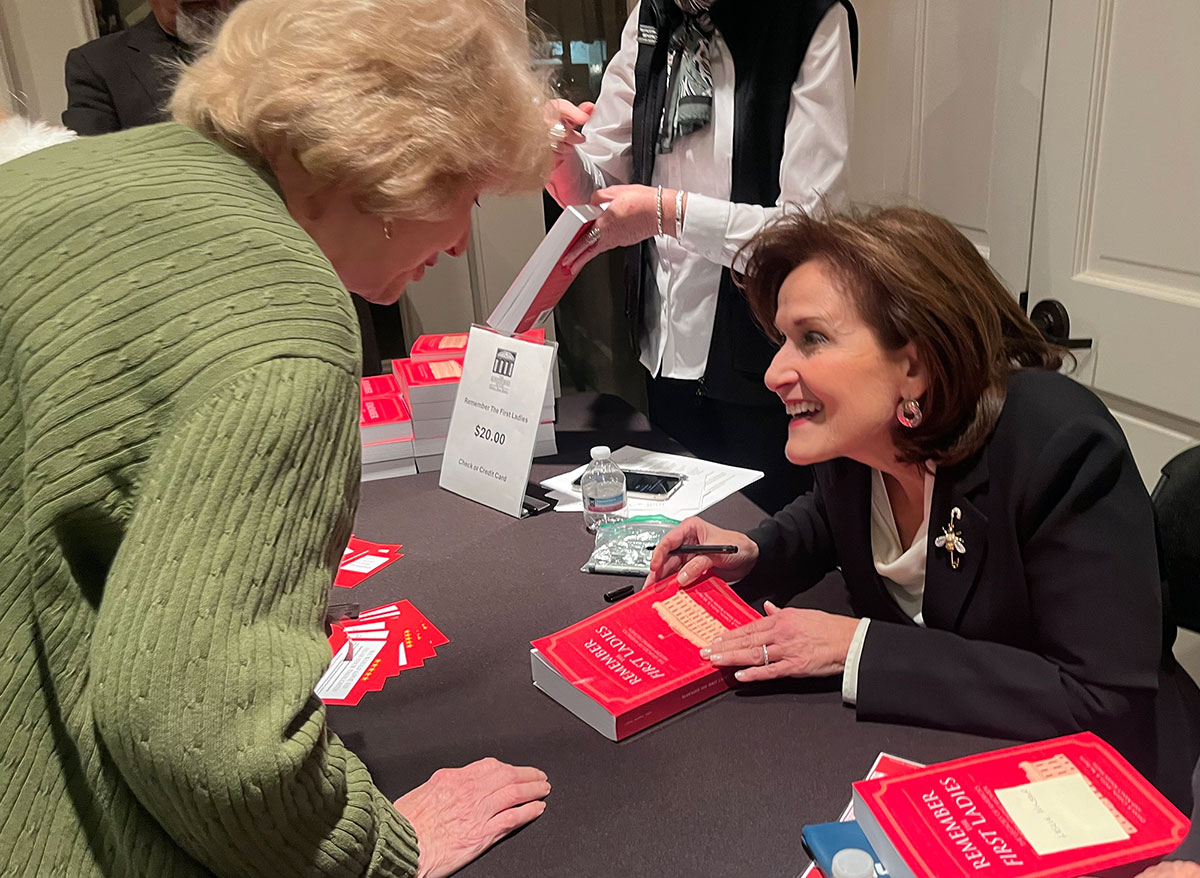
A good president is one who empowers his country. A great president is one who is empowered by his wife.
Anita McBride, former Chief of Staff to first lady Laura Bush, hosted a lecture, “First Ladies: Impact and Legacies,” at the McFaddin-Ward House, Jan. 16. McBride took the audience through the extensive history of each first lady and their contributions to the country.
“I love this topic of first ladies,” she said. “I love telling their stories. So many of these stories are not told. They’re also underrepresented. Many first ladies are misrepresented.”
McBride said Americans have been curious about the first lady since Martha Washington. While modern first ladies are more visible than their predecessors, historians often have to rely on biographies, but these often do not properly reflect the effect they had on America and their husbands’ presidencies.
“We feel it’s not possible to look at the arc of American history without examining them and telling their story, and considering their influence and all of their achievements,” McBride said.
One of her motivations for co-authoring the book with Diana B. Carlin and Nancy Kegan Smith stemmed from an entreaty from an early first lady to her husband.
“We drew inspiration from a first lady herself, from Abigail Adams, who counseled her husband, John, to ‘remember the ladies’ when drafting the Constitution at the Constitutional Convention, writing, ‘Be kinder to women than your ancestors have been, if not, we would foment a rebellion,’” McBride said. “As we know, of course, women were not written into the Constitution, and it would be 133 years before there was a Constitutional Amendment giving them any political rights.”
McBride said that there is no actual job description for the first lady, so each is free to interpret the role in their own way.
“The Constitutional oath for president is very short,” she said. “It’s only 35 words, but the Constitution does not have one word about the first lady and what she is supposed to do. To this day, there is still no formalized position description, and there was no formal budget for a first lady staff until 1978 when Rosalynn Carter pushed for it.
“There is no one way to be a first lady,” McBride said. “The influential role is really rewritten by each person and shaped by their individual character, their personality and their interests and their history.”
Although these women were the president’s wife, they did not have any added freedom compared to normal women. The history of first ladies parallels that of women in the country as they slowly gained rights, found their voices in the public square and became independent players on the political stage.
While each of the women brought something unique to the position, several stood out. Abigail Adams planted positive news stories about her husband in the press so the people would have a positive view of him, and she wouldn’t be the only first lady to do that.
Sarah Polk was very involved in her husband James Polk’s political campaigns, but did not support women’s suffrage because she believed women were too pure to be involved in politics.
Julia Tyler took a different approach to the press from Abigail Adams. Rather than planting stories about her husband, John Tyler, she planted positive stories about herself, something that could have benefitted Mary Todd Lincoln, who was an incredible first lady but had very bad press. One big reason for that is that she spent a four-year budget in four months, which was not a good look in time of war.
Caroline Harrison used her power to support equal education for women, along with forcing Johns Hopkins University to admit women, while Florence Harding was the first first lady to be able to vote.
Eleanor Roosevelt became the model of what a first lady should be. She was strong and independent, driving herself around with no security and keeping a gun with her for protection. She would hold press conferences where only female reporters were allowed.
Eleanor invited the American public to write letters to her and her husband, Franklin D. Roosevelt. She was also against racial discrimination and was the first to inform the public about the attack on Pearl Harbor through her weekly radio broadcast.
Jackie Kennedy was the first to show the inside of the White House to the American public with a walk and talk with CBS. She also had the White House classified as a museum and created the White House visitor guide.
Betty Ford went public with her battle with breast cancer. The decision to make her illness public raised awareness of breast cancer and encouraged women to be checked. In fact, McBride said, the medical profession talks of breast cancer awareness as pre-Betty and post-Betty.
McBride’s lecture highlighted the impact these women had on American history, an impact that is underrepresented in history books.
